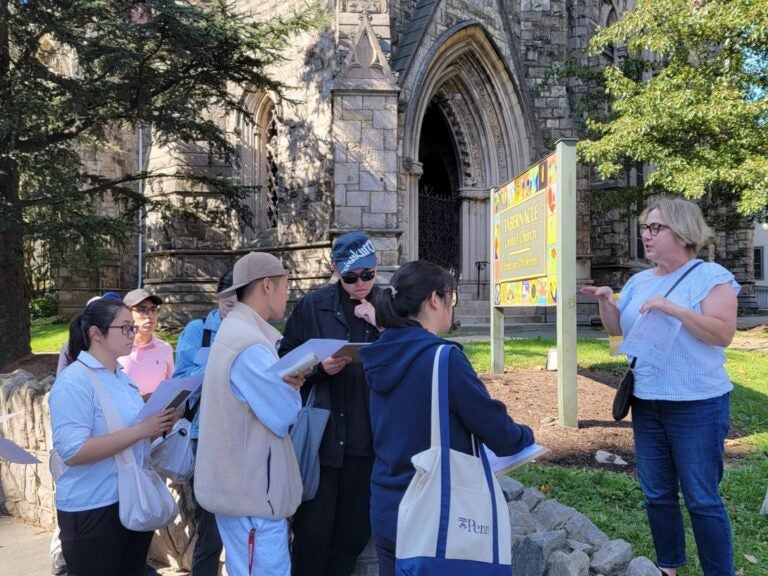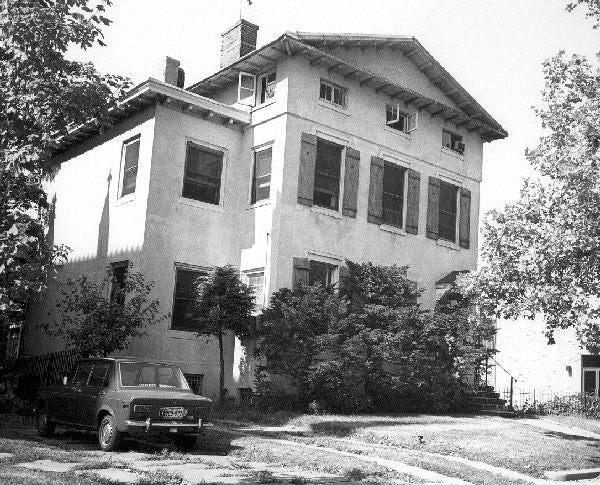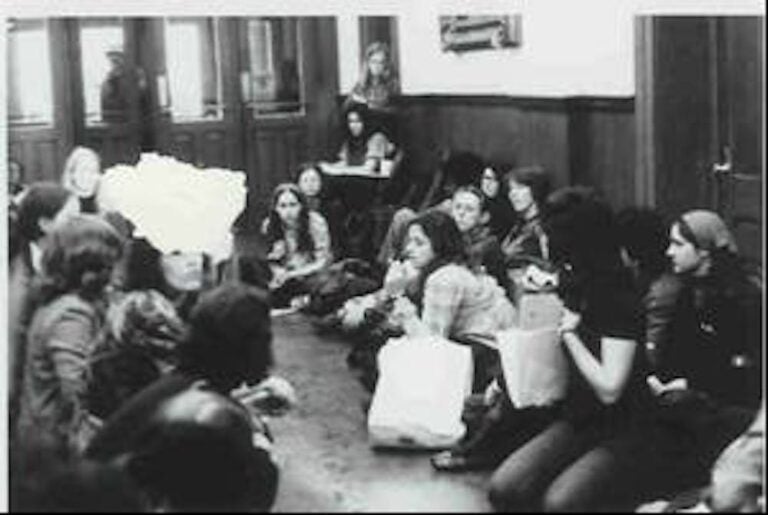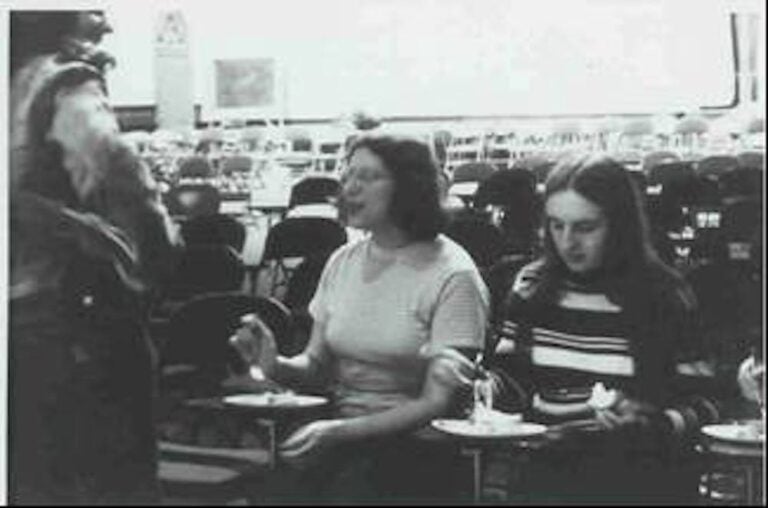Weitzman Student & Alum Designate Penn’s Oldest Property to Philadelphia Historic Register
Ke-An Chiang (MSHP’25), uncovered the 250-year history of the Greenfield Intercultural Center at 3708-12 Chestnut Street, which served several families as a suburban villa before being acquired by the University in 1982.
The building that houses Penn’s Greenfield Intercultural Center has been listed on the Philadelphia Register of Historic Places, thanks to a nomination authored by Ke-An Chiang, a Master of Science in Historic Preservation (MSHP) student at Weitzman.
Built circa 1845, the Reed-Hubley Residence, a 3-story villa at 3708-12 Chestnut Street, is believed to be the oldest building owned by the University of Pennsylvania, outside of Hospital properties.
Chiang conducted original historical research for the nomination in the Fall 2023 semester of HSPV 6000 Documentation, Research, and Recording I, taught by Francesca Ammon, associate professor of city and regional planning and historic preservation; Kecia Fong, senior lecturer in historic preservation; and the late Aaron Wunsch, an associate professor of historic preservation.


The instructors then passed Chiang’s final paper on to Amy Lambert, a preservation alum from 2016 who serves as the president of the board for the University City Historical Society (UCHS). UCHS sponsored the nomination for submittal to the Philadelphia Historical Commission, which voted unanimously to designate the property on March 15.
Ke Feng (MArch’98), senior architect in the Office of the University Architect, spoke at the Historical Commission meeting on behalf of the University. “We’re very happy and grateful for this nomination,” he said, “so we support that designation to the Philadelphia Register of Historic Places.”
Site designation is one of the fundamental tools of historic preservation at the local, state, and national levels. Nominations document the historic significance of their subject property and, if approved, can afford those properties protections going forward.
Developing historical arguments for the significance of sites is the core of the Documentation I course. In her nomination, Chiang argues that the structure merited designation because it stylistically reflects a suburban aesthetic preference during a rapidly industrializing period, and exemplifies the moment Greek Revival architecture began to turn toward the Italianate.
Further, she argues that it is emblematic of the changing social history as the area developed as a “streetcar suburb” in the late 1800s, a new urban form enabled by the burgeoning technology of the rail-born horse-drawn streetcars. Chiang combined original deed research at the City Archives with historic newspapers to craft a narrative about the people who occupied 3708 Chestnut.
“I live on Chestnut Street, so I saw that building a lot,” Chiang remembers. “But I never thought that I could dig into the history so much and find an argument for the building. I did have fun in putting all these together.”
“Documentation I is a foundational course for all historic preservation students,” notes Ammon. “Whether they intend to focus on materials-based conservation, adaptive or new designs in historic settings, preservation planning, or the public history side of the field, our graduates will all need to know how to research the history of a building, site, or neighborhood. This course equips them with the archivally-based research skills to establish that starting point.”
Each year, course instructors select a focus neighborhood in Philadelphia. 2023 students’ properties clustered around Spruce Hill, a West Philadelphia neighborhood with the largest intact collection of Victorian architecture in the country.
In addition to the excess of historic character, the neighborhood selection was strategic in its timing: that October, Spruce Hill Civic Association (SHCA) submitted an historic district nomination for the third time in almost four decades. In July 2024, the Southeast Spruce Hill Historic District, nominated in partnership with UCHS, was designated to the local Register, safeguarding all properties within its boundaries from demolition.
Most of the other HSPV 6000 students’ properties will likely be protected under the auspices of this or a further three proposed historic districts within Spruce Hill. 3708 Chestnut is not within those boundaries and held the potential for designation based upon its individual significance. The property therefore warranted an individual nomination.
Wunsch, a former resident of Spruce Hill, knew about the neighborhood’s upcoming designation effort, which was launched in response to increased demolition and gentrification to the north.
Ammon explains, “Aaron had been keeping a running list of buildings in the area that could possibly merit designation based upon their architectural significance. As our students dug into these properties, however, they oftentimes uncovered meaningful social and cultural stories that went beyond architecture alone, demonstrating the many rich layers of history embodied in the built environment all around us.”

To illustrate the structure’s rich social history in her nomination, Chiang included an advertisement for E.B. Hubley’s art supply business. While preparing the nomination for submittal, Lambert noticed a significant name within Chiang’s detailed chain of title: Rubens H. Peale. After further digging, Lambert discovered that the Hubley family were related by marriage to the renowned artist Charles Willson Peale. Including this connection in the final document gave further meaning to the social history of the site, and demonstrates the collaborative nature of the work Chiang and UCHS did.
The quality of the nomination helped it sail through the Committee on Historic Designation, which reviews applications before they appear before the full Historical Commission, and which, Lambert notes, was composed of Wunsch’s former friends and colleagues.
As Lambert said in her remarks at March 15’s Historical Commission meeting, “It’s a wonderful reminder of the long shadow our friend Aaron Wunsch still casts in our beloved city.”
New Faces, Same Mission: 50 Years of the Penn Women’s Center
Content warning: The following article includes mentions of rape, sexual violence, and murder, and can be disturbing and/or triggering for some readers. Please find resources listed at the bottom of the article.
In the early ‘70s, news of sexual assault on campus traveled in the forms of rumors and whispers.
“No one could confirm what was really happening,” Carol Tracy (C ‘76) says. “Because of the rumor mill, we didn’t know if there was one [assault] in Houston Hall or five.”
Before 1973, no woman on Penn’s campus was thinking about safety, or at least no woman that Tracy knew. But when the stories of sexual assault around campus began circulating, this changed.
From Tracy’s perspective, the rumors were largely ignored by Penn’s administration, contributing to a climate of fear for women on campus. When two nursing students were gang–raped in the SEPTA station at 34th and Chestnut streets in March of 1973, a group of Penn students decided they could no longer ignore the problem.
Tracy had been previously involved in feminist activism at Penn. She came to Penn as a secretary in 1968, taking night classes until she was able to enroll as a full–time student. Throughout that time, she was focused on a union movement for secretaries. But in 1973, her activism focus shifted to sexual harassment.
In April of that year, students and community members organized a sit–in at College Hall that would eventually lead to the founding of the Penn Women’s Center. The PWC still exists, offering a community space for gender equity on Penn’s campus, Director Elisa Foster says. Fifty years after the sit–in, their mission remains the same, even if the faces who are leading it have changed.
1973 was the height of the second–wave feminist movement, when equality for women was at the forefront of social activism. The Equal Pay Act was passed in the previous decade, prohibiting sex–based discrimination. Title IX had been enacted the year before, ending Penn’s gender–segregated honor societies. In January of that year, the United States Supreme Court ruled on Roe v. Wade, protecting abortion rights.
“With Title IX, people weren’t even thinking about sexual harassment,” Tracy says. While the Equal Pay Act, Title IX, and Roe v. Wade were legal victories, “sexual assault and domestic violence was the one issue that didn’t come from legislators but from grassroots movements.”
This grassroots organizing approach is what fueled the sit–in at College Hall. Efforts to start a Women’s Studies program at Penn were well underway, and students began to consider the best way to handle the assault rumors on campus. Survivors weren’t the ones to come forward; rather, it was students worried about it happening to them.
The students had previously met with the director of public safety to learn more about what was going on and how to stay safe. In the meeting, he offered them advice: Don’t wear provocative clothing.
“My response was, ‘I should be able to walk down Locust Walk buck naked and it’s still your job to protect me,” Rose Weber (C ‘75, L ‘96) says. “That meeting was the real catalyst that just got us mad enough that we decided we needed to sit–in.”
A few days after the meeting, Robin Morgan, radical feminist and author of Sisterhood is Powerful, came to give a campus talk by invitation from the English department. “She said, ‘You absolutely have to do something. This can’t go on,” Tracy recalls.
So students gathered in the Christian Association basement to make a plan. “Any story about the development of the Women’s Center has to take the CA into account,” former CA intern Betsy Sandel says. Later renamed Concern through Action, the anti–war movement had just ended, and the CA had been “the place for everything” throughout the protests. The students returned there to plan.
Their decision: a sit–in, one of the first all–women sit–ins on a college campus, and among the most influential.
“This was truly a collective moment,” Tracy says. “Students and community members worked really closely together to create a safe space for women on campus.”
Former Psychiatry and History professor Caroll Smith–Rosenberg and Tracy were the key negotiators, sitting around a table in College Hall with the president, provost, dean of students, and several other administrators.
They presented the group’s list of demands, which included better lighting on campus, a bus service, alarms in bathrooms, staffing of a senior–level policewoman to support assault survivors, the right to bring their dogs to class, and of course, the Women’s Center.
As they negotiated, over 200 students and community members occupied College Hall. “We just congregated. It was a huge number of people,” Sandel says. “And it wasn’t just all women. There were lots of male faculty and male students too, but mostly women, just congregated in the hallways.”

The group was careful not to violate open expression guidelines. They lined the hallways, ensuring they didn’t prevent anyone from entering the building or getting to their classes. Local restaurants provided food, and they slept in sleeping bags on the floor for four days.
As Tracy and Smith–Rosenberg continued negotiations, the dean of students received a note requesting their permission to rent College Hall 200, which had been the protest hotspot of the anti–war movement. He was surprised, telling Tracy that protests usually don’t rent the room. “Well, I’m sorry,” Tracy recalls Smith–Rosenberg responding. “Women are overly socialized, and we’re just going to stay until this is over.”

When Friday rolled around, the College Hall security guards were under the impression that the protestors would pack up and go home for the weekend. “By late afternoon, they realized we were really and truly going to stay as long as it took, and they basically caved,” Weber says.
Negotiations were straightforward. Every demand was met, much to the organizers’ surprise. In fact, Weber never expected the Women’s Center to become a reality—it was a throwaway demand, designed to be something they were willing to give up during negotiations.
“It was pretty clear the University had to do something,” Sandel says. “There was serious fear and danger, plus a public relations crisis.”
Getting the center off the ground was a “process,” according to Weber, but a process that moved quickly. Housed in Logan Hall (since renamed Claudia Cohen Hall), the PWC became a place for women to connect with each other and engage in activist work.
They also developed educational opportunities, including the Free Women’s School, a ‘courses without credit’ program offering women from Penn and the greater Philadelphia area an education in “areas not usually offered in the college curriculum,” Sandel says.
